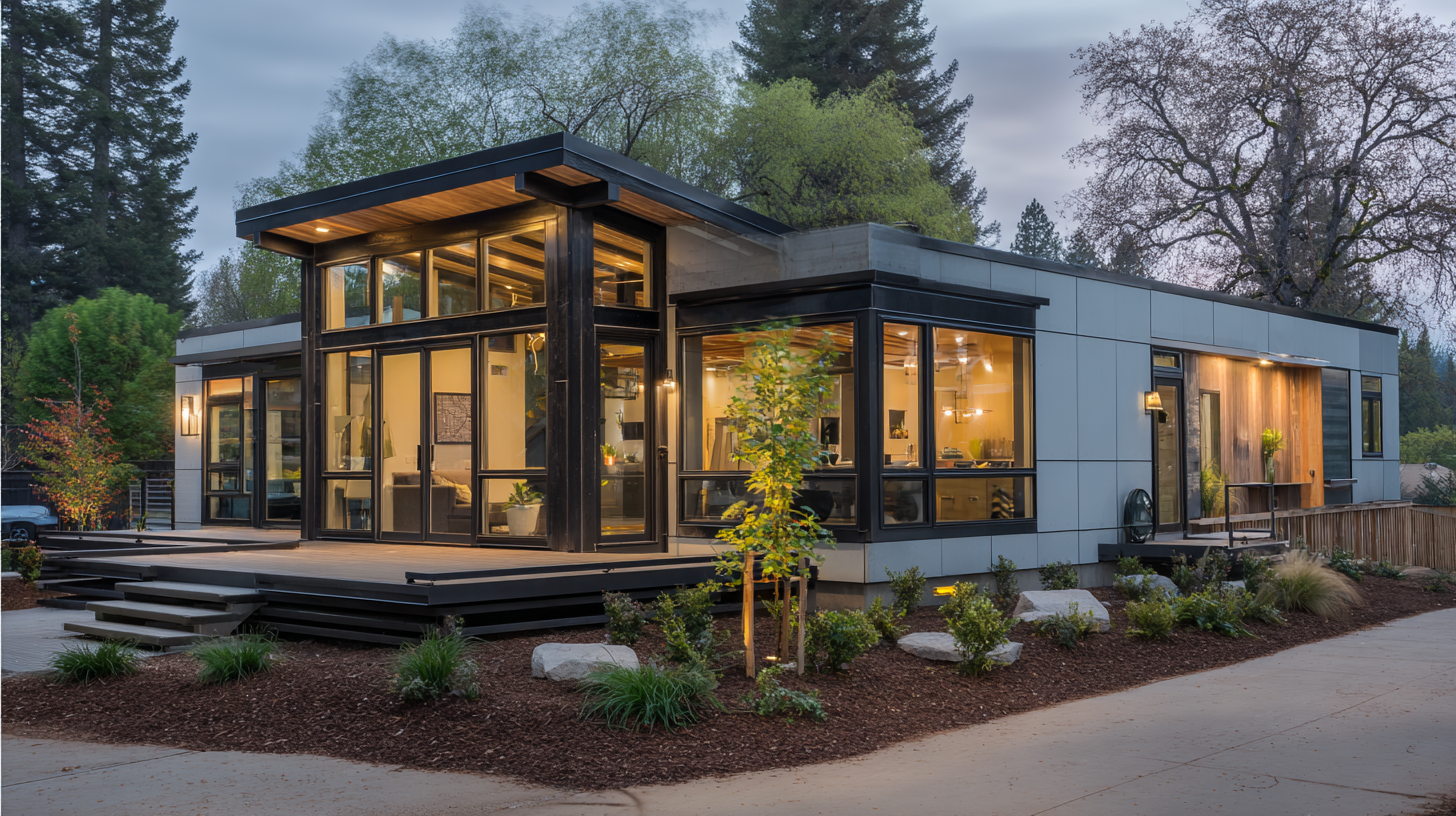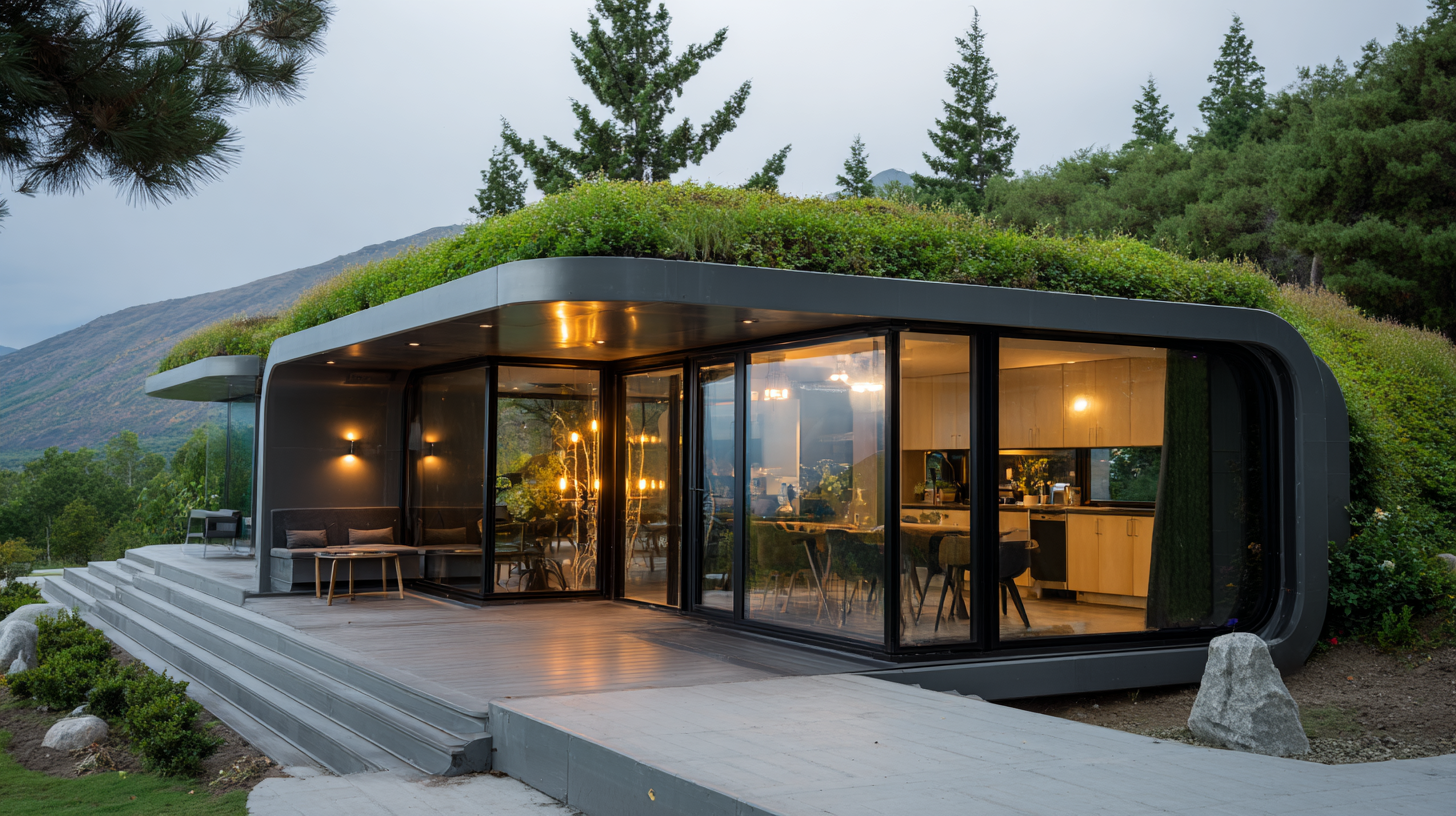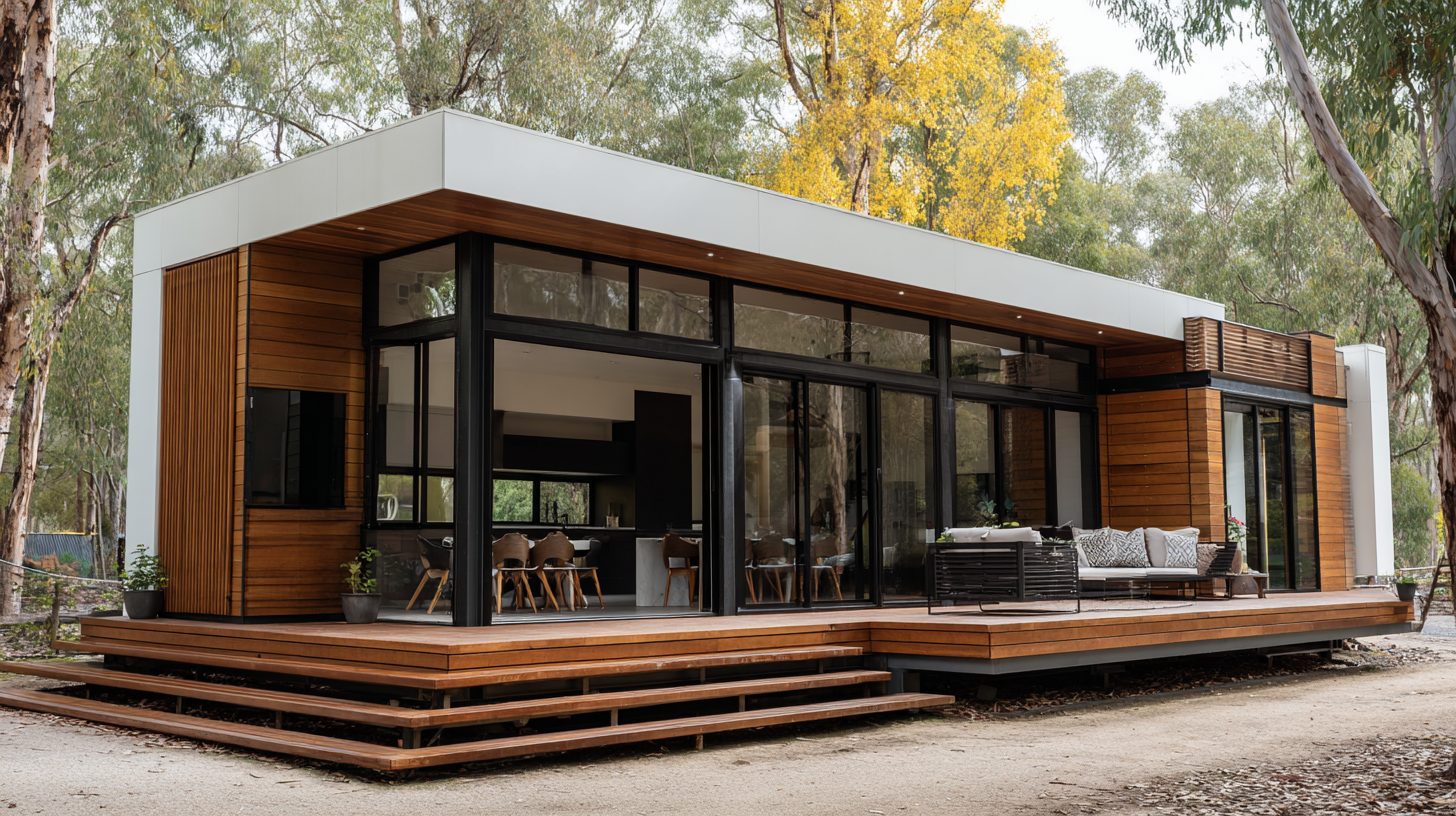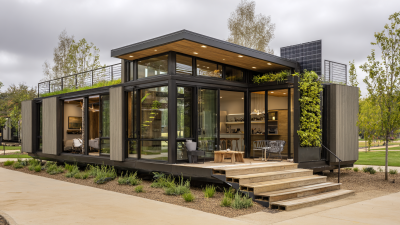Exploring the Future: Sustainable Living with Innovative Prefab Homes
As the world increasingly grapples with the effects of climate change and urbanization, the pursuit of sustainable living has become a pressing priority. Innovative prefab homes have emerged as a viable solution, offering efficiency and eco-friendliness in their design and construction. According to a report by the U.S. Green Building Council, buildings account for nearly 40% of carbon emissions in the United States, highlighting the urgent need for sustainable alternatives. In this context, prefab homes provide a promising pathway, with their ability to reduce waste and construction time while maintaining high energy efficiency.

Industry expert Dr. Emily Schneider, a leading voice in sustainable architecture, notes, "Prefab homes aren't just about convenience; they represent a significant leap towards reducing our carbon footprint and addressing housing demands." This perspective aligns with a growing trend where consumers are increasingly drawn to environmentally responsible living spaces. A study from the National Association of Home Builders reveals that around 75% of new home buyers express a desire for sustainable features in their homes, underscoring the market's readiness for innovative prefab solutions.
As we explore the future of living, the development and popularity of prefab homes indicate a pivotal shift towards sustainability—merging form, function, and innovation to meet the needs of modern society while preserving the health of our planet.
Understanding the Benefits of Prefab Homes for Sustainable Living Initiatives
Prefabricated homes are gaining traction as a sustainable living solution in response to the ongoing housing crisis. These innovative structures not only offer efficiency in construction but also align with environmental consciousness. For instance, recent trends show that automated assembly processes are accelerating the building of prefab homes, contributing to reduced waste and lower carbon footprints. They can also be customized to meet specific energy efficiency needs, making them an attractive option for environmentally-minded homeowners.
Tips for Sustainable Living: When considering a prefab home, assess your energy needs and look for options that incorporate clean technology, such as solar panels and energy-efficient appliances. These additions can significantly lower your utility bills and enhance your home's sustainability.
Additionally, with initiatives like Home Energy Efficiency Kits, homeowners can evaluate and improve their energy and water use, ensuring their new home remains as eco-friendly as possible. By making informed choices during the design and build processes, you can create a living environment that supports both lifestyle and the planet.

Key Innovations in Prefabrication Technology Enhancing Energy Efficiency
The global shift towards sustainable living is being significantly influenced by innovations in prefabrication technology. As the demand for energy-efficient structures increases, the volumetric construction market is projected to grow from USD 33.41 billion in 2024 to USD 53.34 billion by 2030. This growth is largely driven by the advantages of modular construction methods, which enhance not only energy efficiency but also reduce the carbon footprint associated with traditional building practices.
Tips for maximizing energy efficiency in prefabricated homes include integrating renewable energy solutions like solar panels, which can significantly lower energy bills. Additionally, utilizing advanced insulation materials in prefab designs can minimize heat loss, contributing to a more sustainable living environment. Leveraging smart home technologies further enhances efficiency by optimizing energy usage based on real-time data.
Moreover, embracing digital transformation in construction can streamline the manufacturing process of prefab homes, resulting in reduced waste and improved resource management. By continuously innovating in offsite construction methods, the industry can meet the growing demands for sustainability and efficiency while also addressing the challenges posed by urbanization and labor shortages.
Analyzing the Cost-Effectiveness of Prefab Homes Compared to Traditional Constructs
The cost-effectiveness of prefab homes compared to traditional constructions is drawing increasing attention as more people seek sustainable living solutions. Prefab homes, constructed from pre-manufactured components, typically require less labor and time on site. This efficiency translates to cost savings, often resulting in a lower overall project budget. For instance, the streamlined assembly process minimizes waste and can reduce the expenses associated with lengthy construction timelines, which is especially advantageous in regions where labor costs are high.

In addition to the initial savings, prefab homes may also offer long-term financial benefits. Their designs often incorporate energy-efficient technologies and materials that enhance insulation and sustainability. As a result, homeowners can enjoy reduced energy bills over time. Furthermore, with the growing emphasis on eco-friendly living, many prefab options come with sustainable certifications, potentially increasing their resale value. Overall, the combination of reduced construction costs and long-term energy savings positions prefab homes as a viable economic alternative to traditional housing.
Exploring Renewable Energy Options in Modern Prefabricated Housing
As the demand for sustainable living solutions continues to rise, innovative prefab homes present a unique opportunity to integrate renewable energy into modern housing. Homeowners opting for prefabricated structures can easily incorporate solar panels, wind turbines, and geothermal systems. These energy-efficient options not only minimize the carbon footprint but also lower utility bills, making them an excellent investment for the future.
Tips: When considering prefab homes, evaluate the orientation of your house to maximize solar energy capture. Additionally, explore local incentives for renewable energy installations to offset costs. Consulting with a builder experienced in sustainable practices can also ensure your home is designed for optimal energy efficiency.
Beyond traditional energy sources, modern prefab homes can be equipped with smart technology to manage energy consumption effectively. Implementing features such as smart thermostats, energy-efficient appliances, and advanced insulation can significantly enhance the home’s sustainability. By adopting these innovations, residents can enjoy a comfortable living environment while contributing to a greener planet.
Tips: Research various smart home devices to find options that best suit your lifestyle. Regular maintenance of energy systems is crucial for ensuring their longevity and efficiency. You might also consider participating in community solar programs to share resources and reduce costs.
Evaluating the Environmental Impact of Prefab Homes in Urban Development
The environmental impact of prefab homes is increasingly becoming a focal point in urban development discussions. According to the U.S. Green Building Council, buildings are responsible for about 39% of carbon dioxide emissions in the country, a staggering statistic that highlights the need for sustainable construction practices. Prefabricated homes, which are built off-site and assembled on location, offer a solution to this challenge. With reduced waste and energy consumption during the construction process, these homes can significantly lower their carbon footprint. Reports suggest that prefabrication can decrease construction waste by up to 60%, making them an attractive option for eco-conscious urban developers.
Moreover, the energy efficiency of prefab homes further diminishes their environmental impact. A study from McGraw Hill indicates that prefab homes can use up to 70% less energy compared to traditional homes due to better insulation and advanced building materials. This means that not only do prefab homes minimize construction waste, but they also provide long-term savings on energy bills for homeowners. As urban areas continue to expand, integrating prefab housing into city planning could be a pivotal move towards achieving sustainable living while accommodating the growing population.
Exploring the Future: Sustainable Living with Innovative Prefab Homes - Evaluating the Environmental Impact of Prefab Homes in Urban Development
| Feature | Prefab Homes | Traditional Homes |
|---|---|---|
| Construction Time | 3-4 months | 6-12 months |
| Energy Efficiency | High (up to 30% more efficient) | Moderate |
| Cost of Construction | 20-25% less | Standard cost |
| Waste Produced | Minimal | High |
| Use of Recycled Materials | Often | Rarely |
| Customizability | High | Limited |
| Mobility | Easily transportable | Fixed location |


